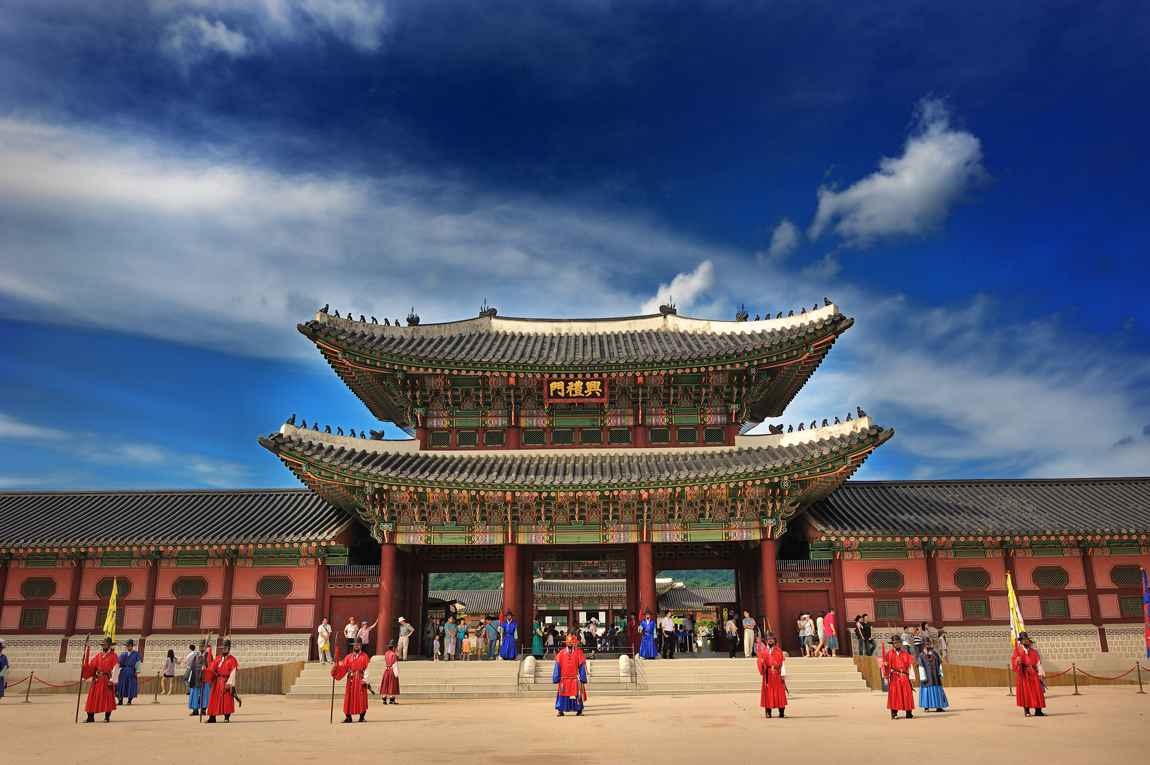


South Korea is located in the continent of Asia. South Korea has developed into one of Asia's most affluent countries since partition in 1948.
| Korea 대한민국 |
|
|---|---|
 |
|
| Language spoken | Korean |
| Population | 51,211,953 |
| Largest City | Seoul |
| Area | 219,155 km2 |
| GDP | $1.7 trillion |
The name “Korea,” used by English speakers today, appears to have derived during the time of the Silk Road when the dynasty in Korea called itself Goryeo. The word was transliterated as “Cauli” in Italian and used by Marco Polo. The English words “Corea” and then “Korea” came from this transliteration.
The history of Korea is continuing from the Paleolithic period to the present.The oldest known pottery to date is around 8000 BC. The Neolithic Age began before 6000 BC, and the Bronze Age began around 1500 BC. According to the records of other middle Goryeo period including Samguk Yusa, the kingdom of Gojoseon was built in 2333 BC. After that, Gojoseon was destroyed by the attack of Han in 108 BC and divided into several countries.
Goguryeo, Baekje, and Silla conquered many countries of the Three Kingdoms period, and occupied a large part of the Korean peninsula and Manchuria. The power of Silla gradually grew, destroying Baekje in 660, and destroying Goguryeo in 688, thus achieving the unity of the Three Kingdoms and occupying most of the Korean peninsula.
When Silla started to decay in the latter half of the 9th century, the age of the Later Three Kingdoms began.When Silla dies in the latter half of the 9th century, the age of the Later Three Kingdoms began. During the period of 993 ~ 1019, Koryeo repulsed the Koran by fighting the Koran.In 1238 Mongolia invaded and after nearly 30 years of war, the two sides signed a peace treaty.
Lee Sung-gyum established the Joseon Dynasty in 1392. During the time King Sejong was in the throne, Hangul was established, and the development of science and technology, such as surveying and embalming, was accomplished. Then, in 1592, the Japanese invasion of Japan occurred. However, thanks to the efforts of General Admiral Yi Sun-sin who led the navy, defeated Japanese army.Throughout the 1620s and 1630s, Korea suffered from the invasion of the Qing Dynasty.
In the nineteenth century, the same external force, Japan and China, approach occurred frequently in Joseon.In the early 1870s, Japan faced a conflict with the Qing Dynasty, which had already exerted an influence over Joseon, and tried to keep Korea under Japanese influence. In 1894, Japan tried to strengthen its influence over Joseon and Lyo-dong Peninsula by winning the Sino-Japanese War, but it was withdrawn by the intervention of the Three Kingdoms On October 8, 1895, Empress Myung was assassinated by Japanese assassins. On October 12, 1897, Chosun newly established the national empire with the Korean Empire (1897-1910), and Kojong became the Emperor. But the unjust demands and interventions of Japan were increasingly intense. Japan could win the Russo-Japanese War (1904-1905) and greatly increase its influence on the Korean Empire. In 1905, Japan imposed pressure on the Korean Empire and forced the Korean Empire to become a Protectorate by forcibly signing the "Treaty of Friendship." In 1910, it signed a major integration treaty. Koreans sought to resist the occupation of the Japanese Empire during the Japanese colonial period. In 1919, the non - violent 3.1 movement took place in various places, followed by the provisional government of the Republic of Korea to take charge of such independence movements and to do many activities in Manchuria, China and Siberia. In the 1920s, independence forces such as the army and the military made direct wars with the Japanese, and the Bongo-dong and the Cheongsan-ri battle. When Japan was defeated in World War II on August 15, 1945, Korea was liberated.On June 25, 1950, the Korean People 's Army invaded the Republic of Korea over 38 ships, resulting in the outbreak of the Korean War. On June 25, 1950, after the Korean War, the Republic of Korea and the Democratic People's Republic of Korea in the north of the Korean Peninsula were clearly divided.